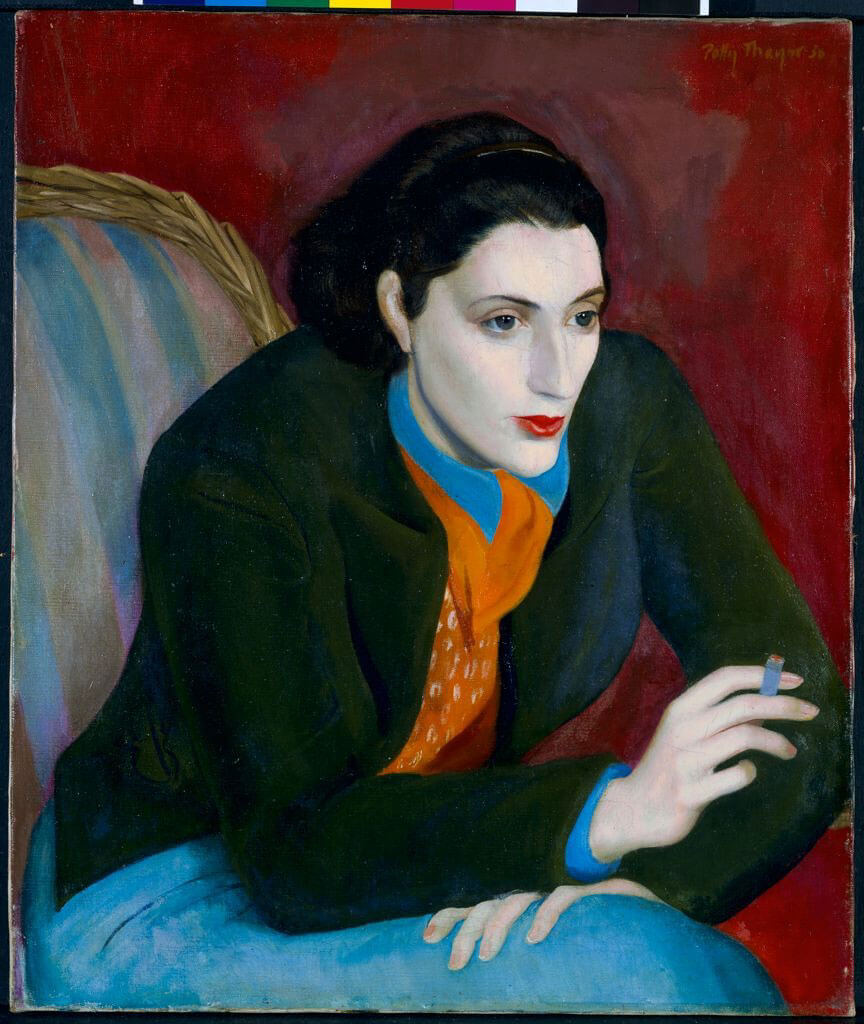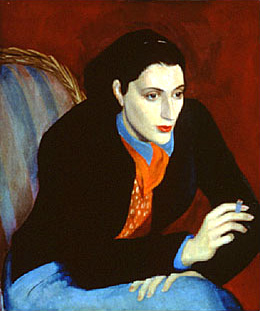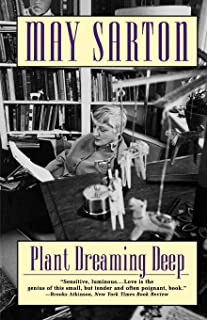- Read
- On The Writer
- On The Writing
- Favorite Quotes
- Photos
- Film and Audio
- Bibliography
- News
- Order Books
Thayer's Portrait of May Sarton by Scott Ruescher
It's Thayer's Portrait of May Sarton, a depiction of the late poet in the prime of her life, on loan from the Fogg Art Museum at Harvard University, that presides most forcefully in this room. Sarton, a heroine of liberal-left lesbian activists in recent years, leans forward, dark hair held back with a band, smoking in her bold green jacket, orange sweater showing underneath, turquoise cuffs and pants contrasted dramatically against a crimson background. The face of the poet who wrote about the solitary life of the writer, about a woman's love of women, is angular, pellucid, handsome, engaged, determined, intrigued, and receptive. Though an icon of modernism, Sarton wrote in traditional (some would say stiff) verse forms. Here, she seems to be leaning into the darkened room of the Modern collection to hear what the others have to say.She's hearing what the thoughtful-looking black man in Lois M. Jones' portrait is saying—something to do with the Emancipation casts in the other room, maybe. She hears the harried-looking woman in Margarett Sargent's Beyond Good and Evil (Self Portrait), in her variegated summer dress, become the medium of all suggestive distortion, squeezed into the long and narrow frame with allusively symbolic dove, cat, and dog images, her face indicative of the damaged goods within. The liberated, intellectual, cigarette-smoking sage, Sarton hears the Striding Amazon sculpture by Katharine Lane (later Weems) announce her bronze athletic presence nakedly and proudly to the world, flexing her posture without a care for the censorious response, or even the approving applause, of the men who rule the worlds of art and commerce. Sarton even seems to be listening for messages from Thayer's own self in the nearby Self Portrait: The Algerian Tunic—and the self-portrayed Thayer in turn seems to be turning her head to hear better herself, her short red haircut, her lovely pale limbs, her strong left hand grasping a long assertive paintbrush in a keen state of readiness to depict her own pose, the bowl of fruit behind her ready for the still life, her purplish kimono open to the breastbone to reveal a long cylindrical neck of admirable tension and strength. All the way back through the large rooms devoted to the Boston School, back into the smaller room of Arts and Crafts, Sarton's hearing reaches, till finally she can identify that low sound, like surf rolling pebbles on Singing Beach up the coast in Marblehead—she hears the snoring of the servant woman in the Anne Whitney sculpture. And she knows that Leif Eriksson, too, discovered America.

ArtsEditor:November 2001:Winning Their Way
Source: https://www.artseditor.com/html/november01/nov01_mfa.shtml





